My New Concert Format
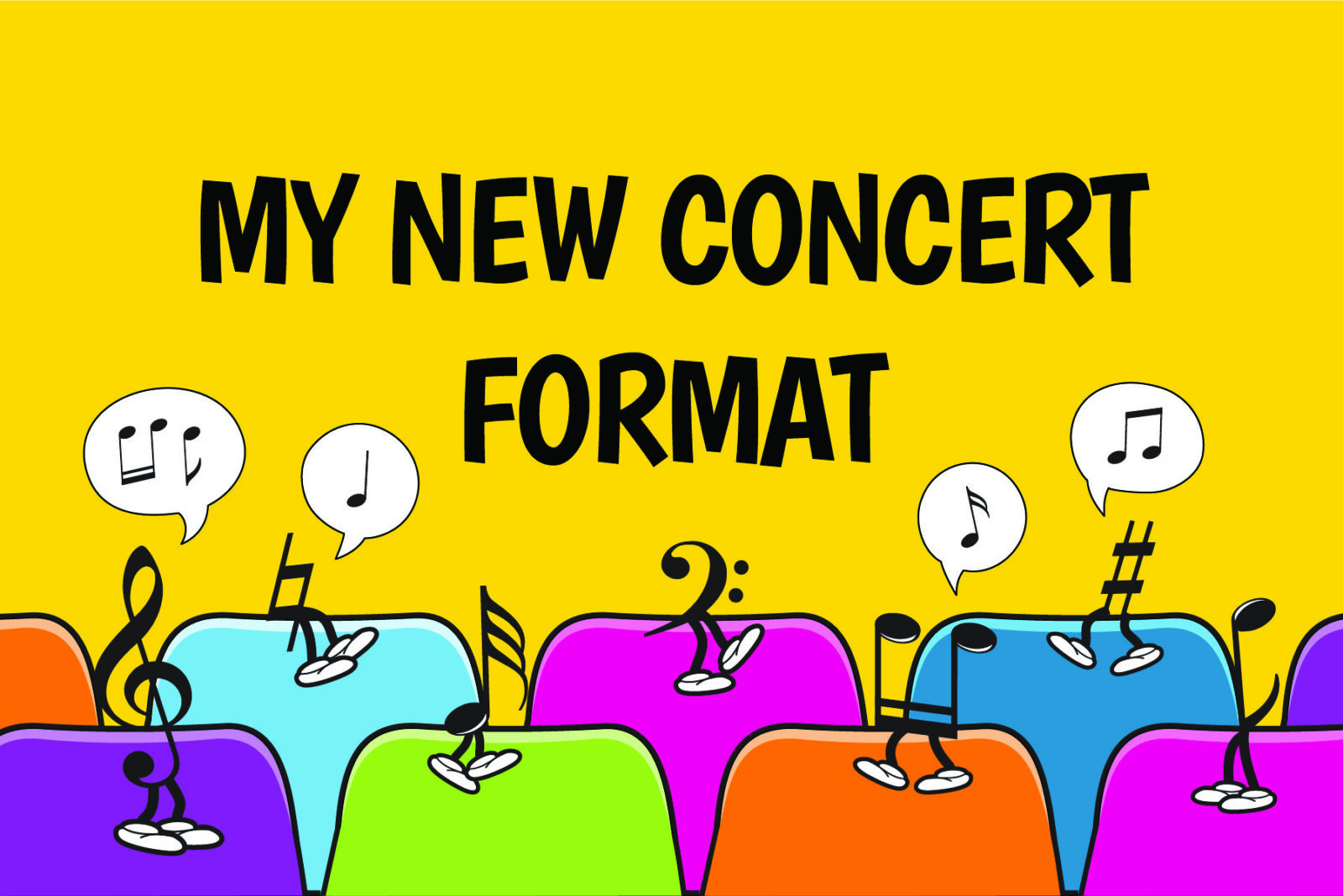
Last week, I changed the rhythm of my studio life forever.
It was the result of an idea I got from the APPC1 2024 in Melbourne. My friend and UME 2 founder Michelle Madder and I attended Lisa Bastien’s showcase session called Teaching Beginners. During this session, I picked up my “one good thing” 3 – and it turned out to be an absolute game-changer.
Lisa showed some footage of one of her students performing at what she called her “chord recital”. The student was playing a Christmas carol and the audience was singing along. She said that she holds these kinds of concerts from time to time, which are different from the usual (more formal) solo concerts. I loved this idea, because teaching to play from chord charts was something Michelle and I had done a lot of during our 3 decades together at AMS, and in fact as school director Michelle had prioritised it as part of the syllabus, even holding ‘Sing and Play’ eisteddfod sections.
So, since I always encourage my students to play chord charts, I thought that having a whole concert full of this was a great idea, and very different from the end-of-year concert that I always held. As soon as Lisa’s session finished, I turned to Michelle and said, “Maybe I’ll have a mid-year ‘Chord Recital’ as well as the end of year one!” to which Michelle said, “Yes but don’t call it that. Call it a ‘Singalong Concert’.” Brilliant suggestion!
And so I started planning for the first ever sing-along concert where every student would choose a song and play from a lead sheet or a chord chart and the audience would sing the words. When I realised I would need to put the words up on a big screen, my husband suggested that maybe it would be more fun to call it a ‘Karaoke Concert’, and this title has really hit the spot with all of my studio families!
Making Suggestions
I spent about a term (10 weeks) getting my students ready for this, firstly by asking each of them to choose their own song. I helped them quite a lot in the choosing and curating process, but if they really had no idea what they wanted to play, I had a list of well-known songs with very simple chord progressions, such as:
Supercalafragilisticexpialidocious
Waltzing Matilda
The Addams Family
Happy Birthday
Yellow Submarine
I was pleasantly surprised both by the depth and range of material that they introduced me to, and the fact that many of them chose ‘old’ songs that were close to my heart, like Everybody Wants to Rule the World and Mamma Mia. However, I hadn’t prepared myself for the fact that I would need to set some boundaries!
The Three Rules
There were some issues that popped up. First of all, some of their choices contained inappropriate lyrics. So rule number one was that the lyrics had to be G-rated.
Then I found that a couple of my students who went to the French school wanted to pick French songs, and I thought that might be difficult for the audience to follow the lyrics. So along came rule number two, which was that the song had to be in English.4
Then I found some students were picking songs from popular video games or movies that didn’t translate too well to acoustic piano, for example Steve’s Lava Chicken from Minecraft or the Dua Lipa track from Barbie. So I created rule number three: it had to sound okay on a piano.5
Programming
Once the song choices were all set and I started thinking about the program order for this inaugural Karaoke concert, it seemed unreasonable to put any of my students in the nerve-wracking position of playing first! I decided it was important for me to play something to warm up the audience anyway, so I put myself first on the program. In my introduction, I gave a demonstration of what it means to play from a chord chart. I popped this up on the screen and played it:
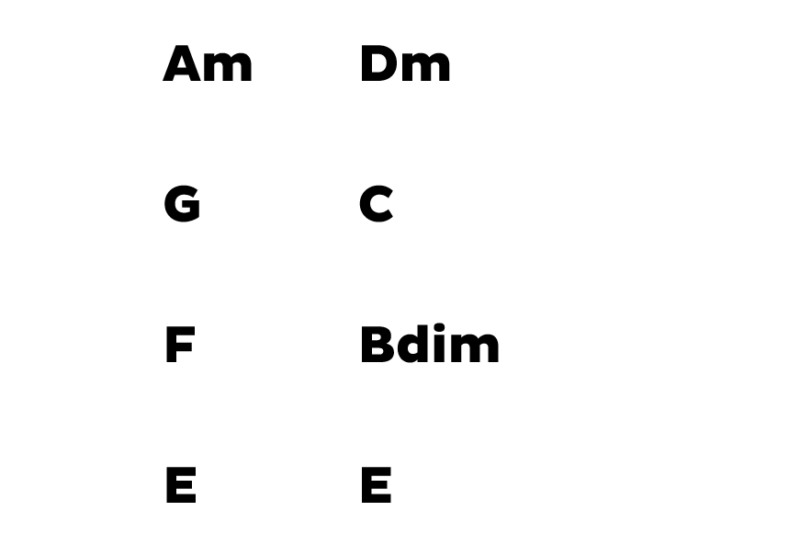
Do you know what song this is? It’s a classic circle of fifths progression, which could apply to many songs! I asked the audience to raise their hand if they recognised the song, but not to say what it was.
Then I showed them the slightly more complicated version:
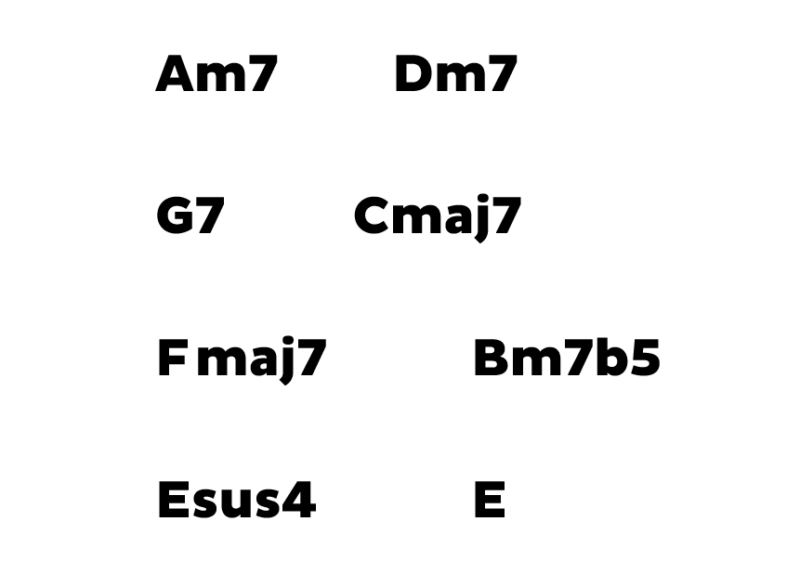
I played that progression with more clues in the voicing. This time quite a few hands went up! (Do you know it yet??)
Then I demonstrated playing it in a different pattern, with a broken octave ‘disco bass’ in my left hand. Now LOTS of hands went up!
Finally, I put up the lyrics, with the chord symbols above:
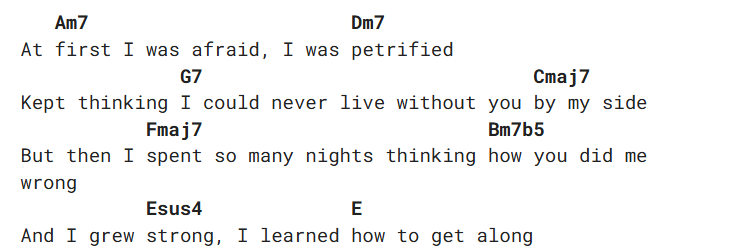
Of course now everyone knew my chosen song, which was Gloria Gaynor’s I Will Survive.
I then explained that this format of lyrics with chord symbols above was the ‘music’ that everybody was using for this concert. No-one was playing from traditional notation, and I explained that it is a special skill to be able to play from this different kind of notation. I could tell that the families were all very impressed!
Here is a short video of how it went over, including the intro, which I explained is all based on the chord E7 b9, and me having a go at the instrumental solo 😊:
The warmup really did warm everyone up. The room was quite electric, and I have decided that me choosing a song and explaining the concept will be an important start to the concert every year.
The Concert
Here we are, all ready to start:
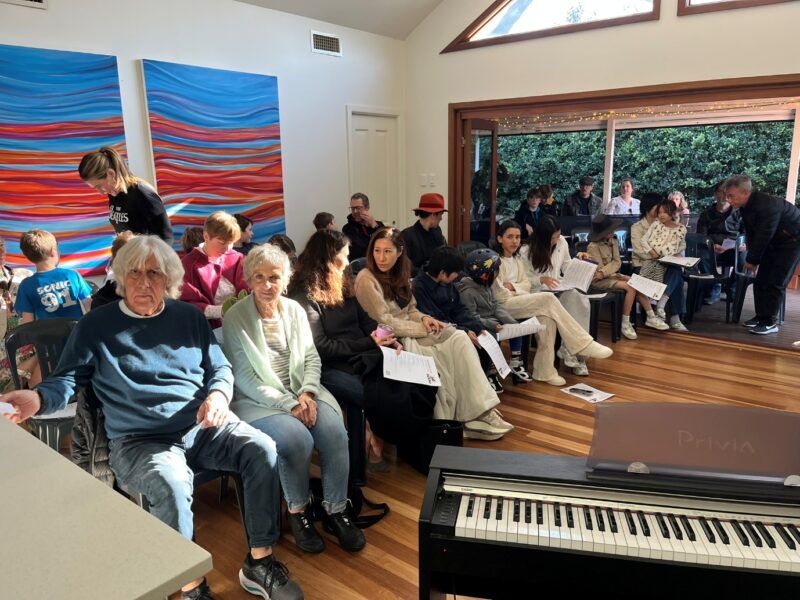
As I introduced each student, I put their ‘music’ up on the big screen. They played the chord chart and the audience had a fantastic time singing the lyrics. It was awesome that the audience could see what chords the performers were playing, and did not get at all distracted by these symbols!
The final program had some fabulous contrast. How many of these songs do you know? 6
I Will Survive – Gloria Gaynor
Try Everything – Shakira
Hopelessly Devoted to You – from Grease
Everybody Wants to Rule the World – Tears for Fears
Waltzing Matilda – traditional
Let it Be – The Beatles
Beautiful things – Benson Boone
Everything I wanted – Billie Eilish
When the Saints – traditional
Yesterday – The Beatles
Iko Iko – Dixie Cups
I’m Still Standing – Elton John
Yellow Submarine – The Beatles
Frère Jacques – traditional
Supercalafragilisticexpialidocious – from Mary Poppins
Mamma Mia – ABBA
Khe Sanh – Cold Chisel
The concert attendance was amazing – there was not a single murmur of having something else on that day that they’d prefer to be at. I think all the families were very invested and the students were excited to do it. I encouraged everybody to dress up in the theme of their genre or artist, which was really fun. I’m so sad I didn’t get a photo of everyone together, but here’s me in my 1970s outfit with young Felix who played an Elton John song 😊:
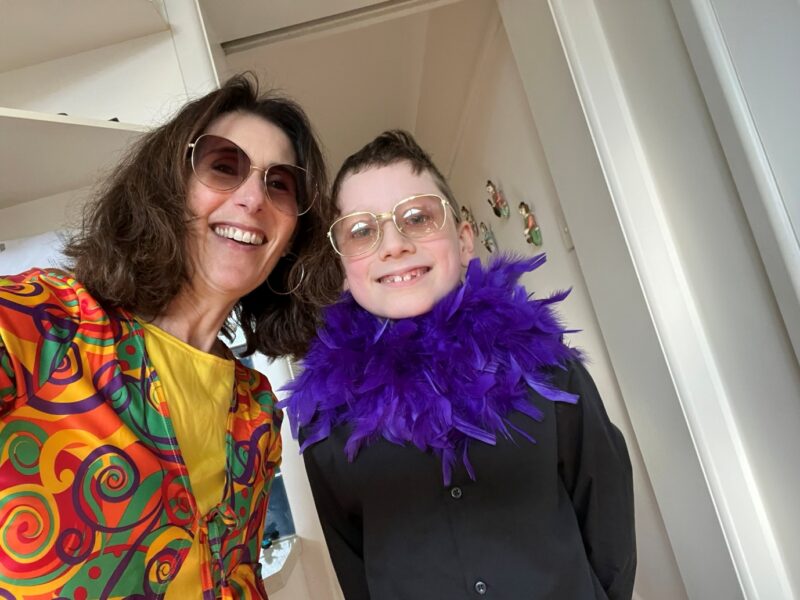
And here are a couple more video excerpts, so you can get an idea of what it all looked and felt like.
Gus playing Mamma Mia:
And Chloe playing and Australian traditional song, Waltzing Matilda
The concert went for about an hour and then we all had afternoon tea together. This was SO fun, especially for me, because everyone started telling me how much they loved the concert! I was flying high, so delighted that it this new format had gone over so well.
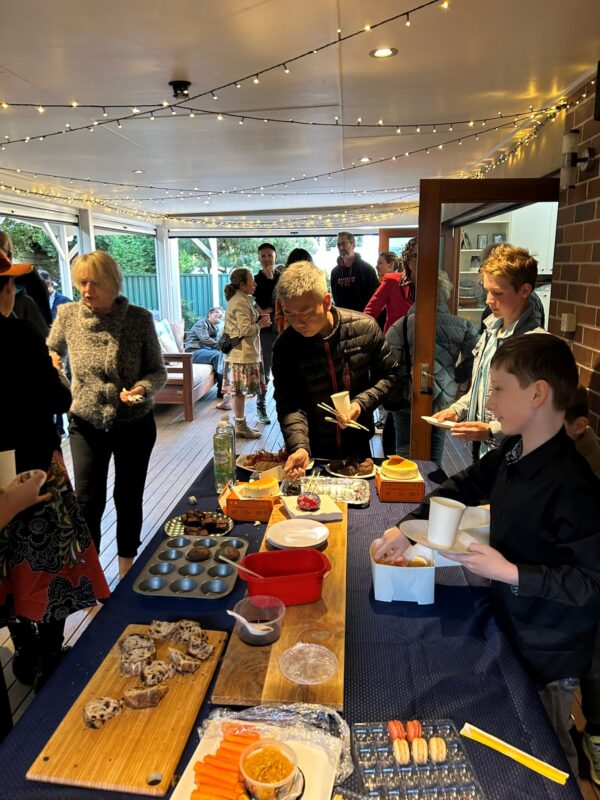
In the week following, I received more positive feedback about this concert than all the other end-of-year concerts put together!7 Here are some of the comments from parents:
“What a fun concert that was! So wonderful for the students to see people of all ages8 and levels enjoying different genres of music, perform in a relaxed setting, and participate in the sing-a-long too.”
“That was the BEST concert I’ve ever been to – including at the Opera House 😊”
“It was a fun-filled, heartwarming celebration – and we would love to have more of this joyful experience in the future!”
I am so happy I had decided to hold this new mid-year performance event. Not only did it educate the parents about a different form of music notation, it created a sense of community in the studio on which I could capitalise immediately (rather than everyone going off on Xmas holidays), and a second opportunity in the year for parents to feel validated about this important extracurricular activity of music education.
I’d love to hear your thoughts! Do you think you might give this concert format a go in your studio?
- Australiasian Piano Pedagogy Conference
- Also ex-director of Australian Music Schools (AMS), and my co-auther for the Blitz sight reading books
- They say that if even if you only pick up one good thing at a conference, it was worth attending.
- There ended up being an exception to this when one very small student did Frère Jacques, but everybody knows that one.
- This was a very subjective rule. It all depended on whether I felt I could create an arrangement for them that sounded full and satisfying.
- I only listed the main artists/bands associated with the songs on the program. I explained to the audience that very often, those artists are not the actual writers!
- In fact I’m a little worried I may have snookered myself in this regard 😬
- My adult students performed too!
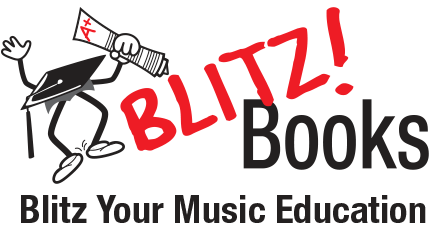
Not because you are our daughter but because you are an exceptional teacher, pianist and human being. It gives us great joy watching you engage with your students and their families. Well done Sammy – so proud of you xxxx
Thanks Mum and Dad! 🙂
SOOO fun! I appreciated all the details, especially how you kicked off the recital with your demo. What a rockstar you are–from head to toe! Will be stealing this idea for sure!
Thank you Leila! And as I said to Marie – steal away! 🙂
What a fantastic idea. Just love it – will be using that one in the near future for sure.
Thank you so much – and such a lovely demonstration.
Blessings
Melody
A pleasure – and I’m so glad you’ll be trying it out Melody!
This is such a splendid way to make wonderful and heartfelt memories of engaging everyone in a concert. Such a fun and awesome concert. Thank you so much for sharing Sam.
Love it !!
🙂
Thanks for sharing. I wish my teacher had had concerts like this!
Me too!
You are BRILLIANT! This concert format is the cutest thing I’ve ever seen. I’m totally stealing this idea!! Thank you for sharing and making the rest of us look so good 🙂
Thanks Marie! Steal away 🙂
This was great. I wanted to jump into the audience and watch the concert too. I was hoping you had more video clips of all the students. What a fun idea and I can see why it was a success. Thank you for sharing. This is something I’d like to eventually try with my students too.
Thank you for the feedback Anna 🙂
Wow, Samantha. I loved this idea, and I’m sure going to be using this one soon. I am all into building a community along with educating the children with music. I love when children get time to learn music and also build meaningful relationships in the process. So this idea really is fabulous. Thanks for sharing this.
Love
Jocelyn
I’m so pleased Jocelyn!
I love this idea! I’m thinking I may try it for a holiday show…(I’m in the US). I always struggle that time of year, mostly because the kids are so busy with so many performances. Rather than a show the last few years I’ve just made holiday videos to share with immediate family, but this could be a real draw! Thank you for sharing, loved the videos!
What a great idea! Thank you so much for sharing. I’m thinking this would be a fun idea for the holiday season (I am in the US). I always struggle then, because the kids are so busy with other shows and such. The last few years I’ve just made videos of their holiday songs to share with immediate family, but this could be a real draw!
Yes! Go for it Karen! 🙂
I always want to build a community and engage the parents together. This is a fantastic idea! I will be stealing it for my Spring concert!
Brilliant idea Ellisa and one I’ll be tring out next year as well!!